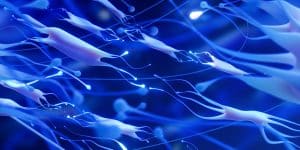The Good, the Bad, and the Ugly… Aspects of Inflammation

Inflammation is a vital part of the body’s immune system response to injury. It is a biological process, similar to a highly organized army protecting a castle. This defense involves a complex cooperation of innate and adaptive immune responses, each serving distinct roles in protecting the body and promoting progression through the healing process1.
Inflammation can be triggered by numerous factors, including physical injury, pathogen contamination (such as bacteria), exposure to irritants, or autoimmune reactions (where the immune system mistakenly targets the body’s own tissues).
The Good:
When inflammation is triggered, the innate immune response acts as the body’s first line of defense. Rapidly mobilizing to contain and eliminate pathogens, the local tissue responds with vasodilation and increased permeability. Specifically, blood vessels in the affected area dilate as a result of histamine release, triggering a cascade of events to increase blood flow to the area. The blood vessel walls become more permeable, allowing immune cells, such as neutrophils and monocytes, to migrate from the bloodstream into the surrounding tissue, a process termed ‘diapedesis’. This increased blood flow allows for immune cells, antibodies, and nutrients to mobilize to the site of injury.
In the context of tissue repair, inflammation plays a crucial role in cascading the healing process. With the process beginning immediately with injury, its duration can range from three to ten days, with a peak typically at day four prior to subsidence. As monocytes migrate to the damaged area, they polarize, or adopt an M1 phenotype, to support pathogen elimination and initial tissue repair before switching to an M2 phenotype. The M2 macrophage phenotype promotes a switch from defense mode to rebuild mode in the progression to healing. This inflammatory switch serves as a signaling mechanism, coordinating the secretion of growth factors necessary for tissue repair and remodeling2. As the local environment of inflammation subsides, the proliferation phase has already begun by promoting the formation of granulation tissue. Consisting of fibroblasts, new blood vessels, and extracellular matrix components, granulation tissue provides provisional structural support and facilitates the deposition of new collagen, ultimately leading to the restoration of tissue integrity3.
Concurrently, the adaptive immune response mounts a targeted and specific defense against pathogens. This response is characterized by the recognition of pathogen specific antigens by T- and B-lymphocytes, leading to the activation of these cells and the production of pathogen-specific antibodies. This adaptive response not only eliminates pathogens but also establishes immunological memory, providing enduring protection against future encounters with the same pathogen. The body is upgrading its defense mechanism to support continuous protection1. These series of coordinated events ensure the body ‘castle’ is protected from imminent pathogen threats as well as support to limit invasion of those same perpetrators in the future.
The Bad:

While inflammation has beneficial properties, inflammation can also have detrimental effects if not properly regulated. Excessive or chronic inflammation can lead to tissue damage and deterioration of structures. In reference to the castle metaphor, prolonged inflammation is similar to an army causing unintended destruction of the protective walls of the castle. Unregulated inflammation can harm the body’s tissues, limiting progression to healing and potential additional challenges such as fluid accumulation and unorganized tissue repair.
The Ugly:
Lastly, dysregulation of the immune response can result in autoimmune reactions, where the immune system mistakenly begins to target the body’s own tissues. This can lead to autoimmune diseases, such as rheumatoid arthritis and lupus, where the body essentially turns against itself, causing widespread damage.
Understanding the intricate processes of inflammation and immune response is crucial in clinical practice, as unchecked parameters of these processes can lead to a challenge progression of healing and protection of the body ‘castle’. By elucidating the mechanisms underlying these responses, clinicians are able to implement strategic interventions to support the body’s immune function and promote expedited healing in patients.
To learn more about Sanara MedTech products, please visit. https://sanaramedtech.com/surgical/
REFERENCES:
- Ellis, S., Lin, E.J. & Tartar, D. Immunology of Wound Healing. Curr Derm Rep 7, 350–358 (2018). https://doi.org/10.1007/s13671-018-0234-9
- Das A, Sinha M, Datta S, Abas M, Chaffee S, Sen CK, Roy S. Monocyte and macrophage plasticity in tissue repair and regeneration. Am J Pathol. 2015 Oct;185(10):2596-606. doi: 10.1016/j.ajpath.2015.06.001. Epub 2015 Jun 26. PMID: 26118749; PMCID: PMC4607753.
- Barrientos, S.; Stojadinovic, O.; Golinko, M.; Brem, H.; Tomic-Canic, M. Growth factors and cytokines in wound healing. Wound Repair Regen. 2008, 16, 585–601.




